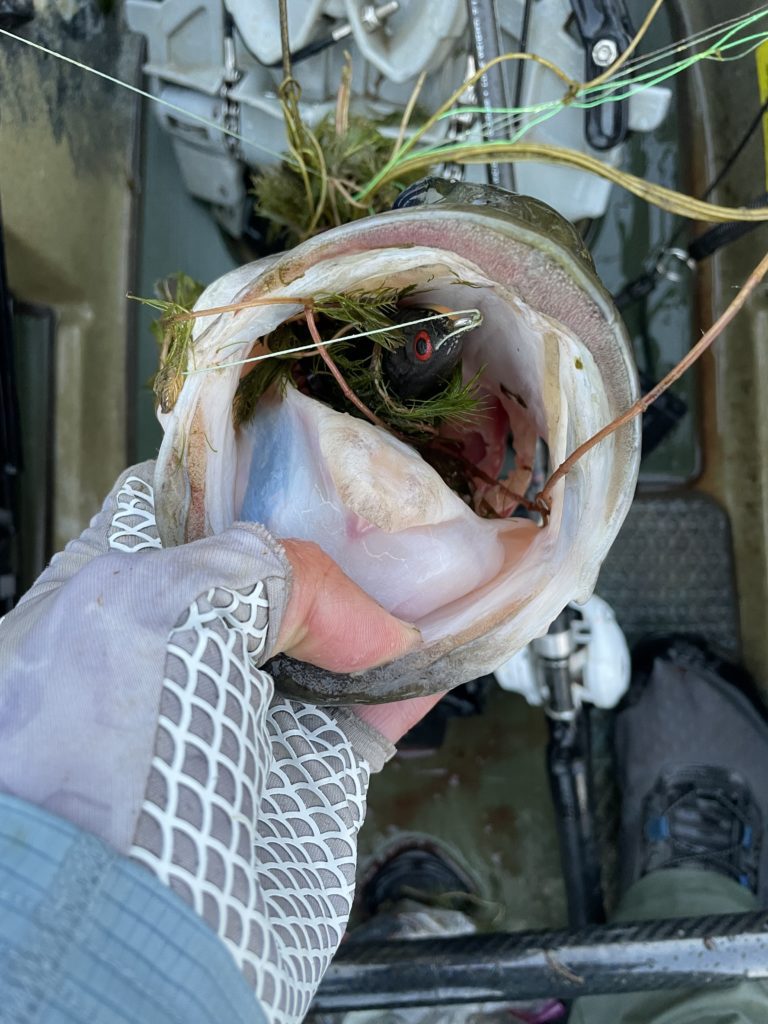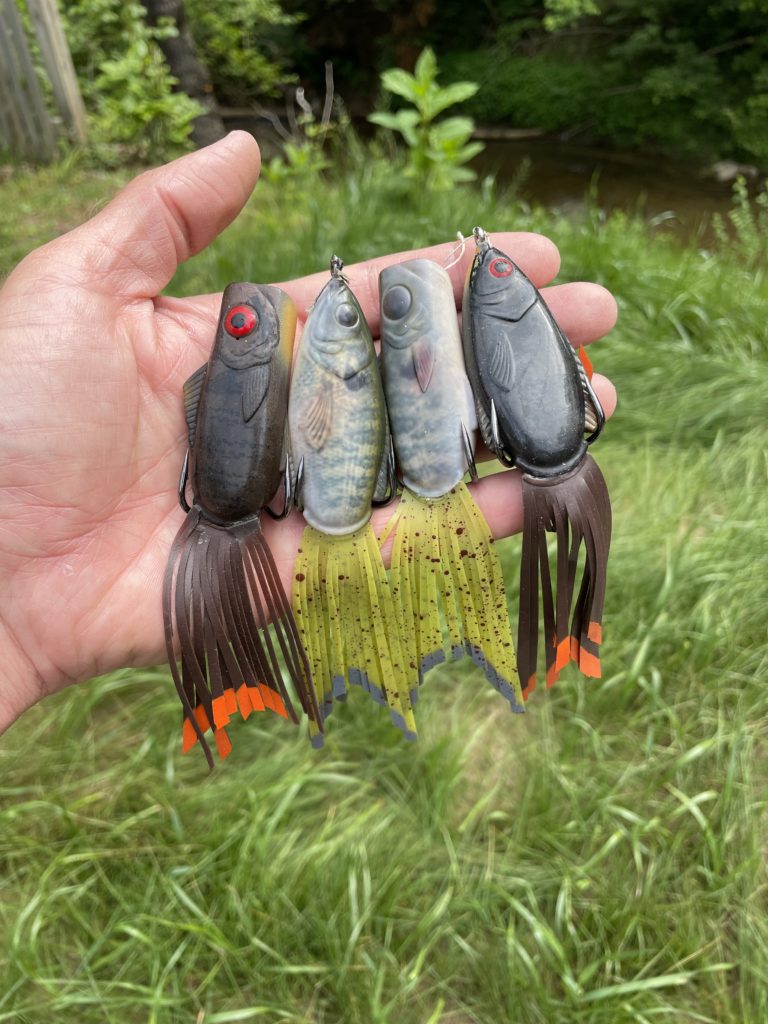Like most anglers, I love catching fish on topwater lures. May is one of my favorite months to make that happen. Here in Virginia, the spawn is over or at least waning. There might be a few bass still on beds, but most are post-spawn. In the reservoirs, the bass are starting to migrate to their summer homes. Before they make it to those deep holes on the main lake, you have the opportunity to capitalize on some fantastic topwater action. Here are a few scenarios I look for.
First, I’m looking for fry guarders. After their eggs hatch, the males shift from guarding the nest to guarding the actual fry. These fry swim around in a ball, similar to a school of shad, and they are often near the surface. The male guards the fry ball, chasing away bluegill and other predators. If you’ve ever seen a bass swimming erratically in the spring, doing figure eights, and occasionally leaving a boil as it bolts towards the bank, that fish was probably guarding fry. These fish can be caught with a number of lures, but I like a prop bait. Something about seeing that fish eat on the surface is just too much fun. My favorite lure for this is the Lucky Craft Kelly J. It has the profile of a bluegill, which is exactly what I’m trying to imitate. The Rapala X-Rap Prop is another bait I’ve had success with. It has a slender, minnow-style profile, but it triggers the same defensive reaction from the bass. They see a predator hovering near their fry, and they want it gone. I keep colors pretty simple. Most of the time I’m using a bluegill pattern. Lucky Craft also makes a color called MS Black that I like for dirty water.
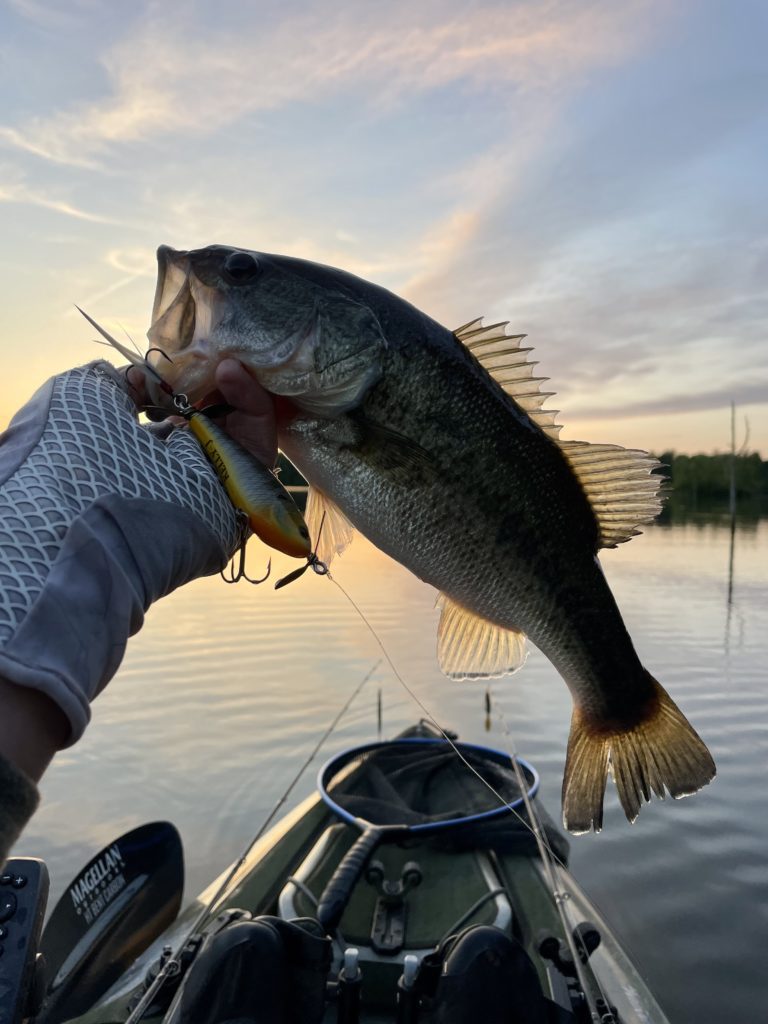
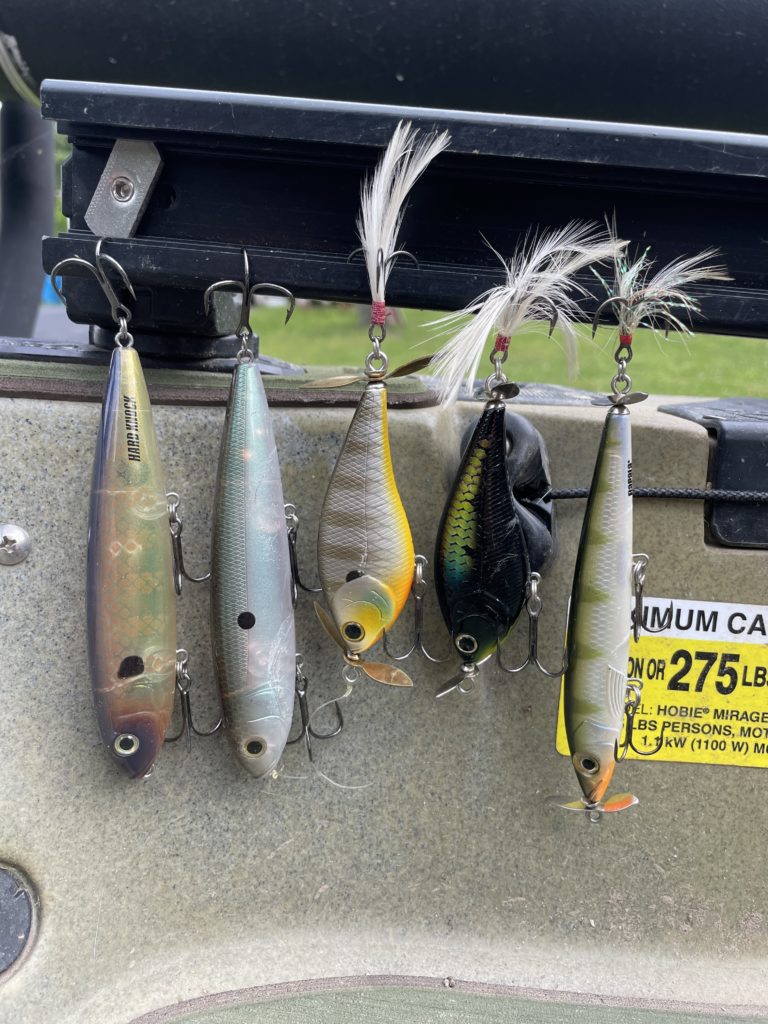

Retrieving a prop bait is simple. If you can see the fry ball, that’s your target. Try to land the lure quietly. Let the ripples subside, then give it a subtle twitch or two. Usually the bass will respond quickly, but if they don’t, I’ll leave my lure sitting motionless for several seconds. Sometimes the lure hovering near the fry, even if it isn’t moving, is enough to trigger a bite. After a few twitches and pauses, reel in and look for another target. This isn’t a technique where you work the lure all the way back to the boat. If it’s calm and sunny – my favorite time for the technique – you may see the fry jump when your lure twitches. If that happens, get ready. If you can see a bass circling, but not the fry, watch it for a bit. After chasing off intruders, a fish will usually circle back close to the fry and wait. Don’t be afraid to fish a prop bait blind, that is, without seeing bass or fry. Go to spawning areas and cast to visible cover. I’ve done well around stumps, willow grass, standing timber, and laydowns. Fish slowly and always watch your lure. Some strikes will be vicious, but others will barely leave a ripple. If you aren’t paying attention, you could miss a strike or the silhouette of a giant bass slowly rising underneath the lure. A final recommendation for these fry guarders, have a wacky-rigged stickworm tied on another rod. A Missile Baits 48 or a Yamamoto Senko make a great follow up lure for fish that won’t commit to the topwater.
The second topwater opportunity involves main lake points. Big post-spawn fish will sit on these points after leaving a nest. Sometimes they suspend over deep water off the end of a point. Other times they are extremely shallow, facing the bank. Even in clear water, some very big bass will sit in barely a foot of water. I think these fish are recovering from their spawn and simultaneously taking advantage of the shad spawn. Since the shad spawn right against the bank, these bass can grab a meal with minimal effort. For this scenario, I like a big walking bait like a Zara Spook. My favorite is the Strike King Sexy Dawg – the full-sized model, not the junior. This time of year, the bass have a high metabolism, and their bellies are empty after spawning, so I like offering them a big meal. Also, the big plugs are heavy, so you can cast them a long way.
I choose a shad color for this technique. A translucent option like Green Gizzard works well in clear water. For dirtier water, I go with a variation of Bone or Chrome. As you probably guessed, I impart a walk-the-dog retrieve to my Spook-style baits. I walk the bait as slowly as possible. I want to make my lure look like easy prey. I like a long glide, pause, and then a glide the other way. If the fish aren’t responding to this slow retrieve, mix things up. Try adding in a few fast twitches and then a slow glide. Once you get a bite, replicate the retrieve that triggered the strike. And be sure to experiment with your casting angles. Don’t be afraid to put your kayak against the bank and retrieve from deep to shallow. A simple change of direction can make all the difference.
My third and final post-spawn, topwater scenario involves bluegill beds. It may be a little early for this bite on your lake, but not necessarily. I’ve already seen bedding bluegill on some smaller Virginia lakes. And I’m using bluegill here to mean sunfish generically. There are lots of different species of sunfish, but I can’t positively identify them all. I doubt the bass can either. There may be slight variance among the species in their spawning habits, but they’re at least very similar. These bluegill beds are like feeding stations. Big bass will hold around them as long as the sunfish are present.
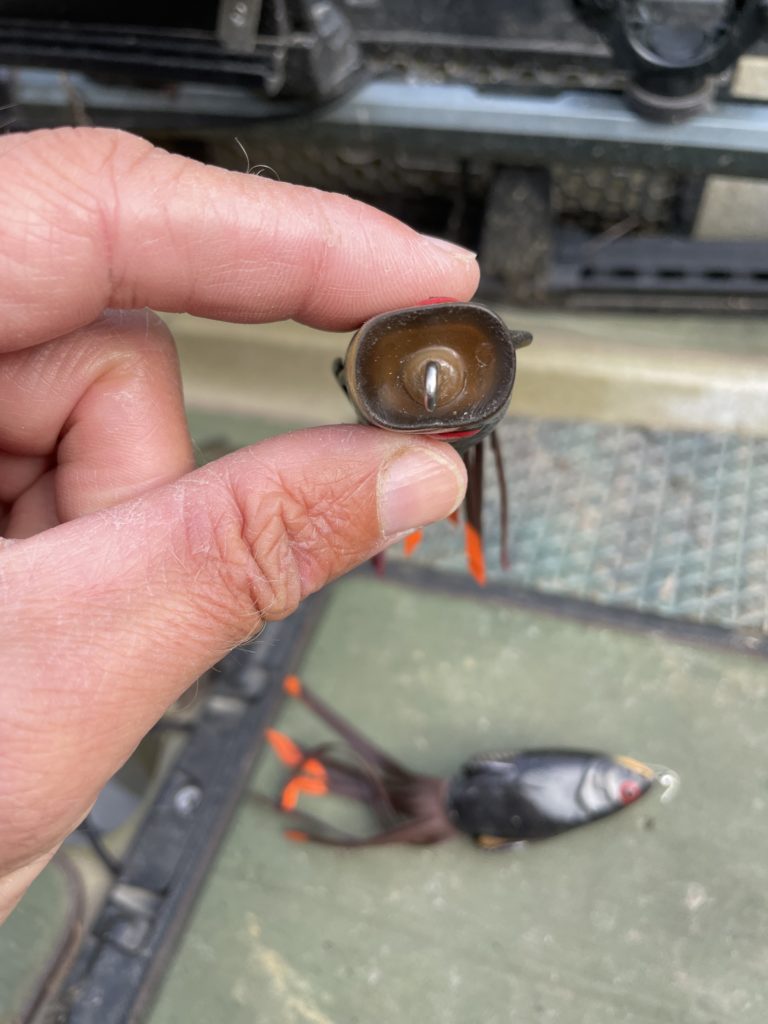

These beds are similar to largemouth beds. An individual bluegill bed is a little smaller than a bass bed, but they’re often found in large clusters. They remind me of the stippling in a golf ball, symmetrically spaced little craters. You can definitely spot them with high-end sonar, but I won’t pretend to know how. My electronics game is weak, so, I just use my eyes. For this you’ll need at least a foot of visibility; 2 to 3 is even better. When it comes to baits, I keep it simple. In open water, where I’m not worried about obstructions, I’ll start with a prop bait. I use the same slow retrieve as with fry guarders, subtle twitches followed by long pauses. A slowly worked walking bait also works well. The darting action can trigger fish that ignored the quieter approach. If the sunfish nests are around heavy cover, don’t overlook a frog. If a fish doesn’t completely engulf your treble-hooked bait, one of the trebles can end up hung in the cover and give your fish an escape opportunity. A frog hook doesn’t have that problem. When it comes to frogs, I’m a fan of the Strike King Popping Perch and the Strike King Pad Perch. Both are easy to walk, and the tails spread when you pause the bait. The Popping Perch has a cupped lip and spits a little water, while the Pad Perch is more subtle. Both will trigger big bites. Around bluegill beds, I’m looking to match the hatch, so natural colors like Bluegill or Green Pumpkin Gill are my favorites. I go bolder – something with chartreuse or even straight black – in dingier water. Lastly, don’t get discouraged if you see a big bass loitering around the bluegill but ignoring your bait. Go look for other beds in the area and come back a little later in the day. Sometimes it’s just a timing deal. A fish will often eat the same lure it ignored a few hours earlier in the day.
Hopefully this gives you some ideas for tricking bass with topwaters this month. These aren’t the only ways to catch them. They might not even be the most effective ways, but they’re definitely some of the most fun. Go catch a giant and send me a pic!
